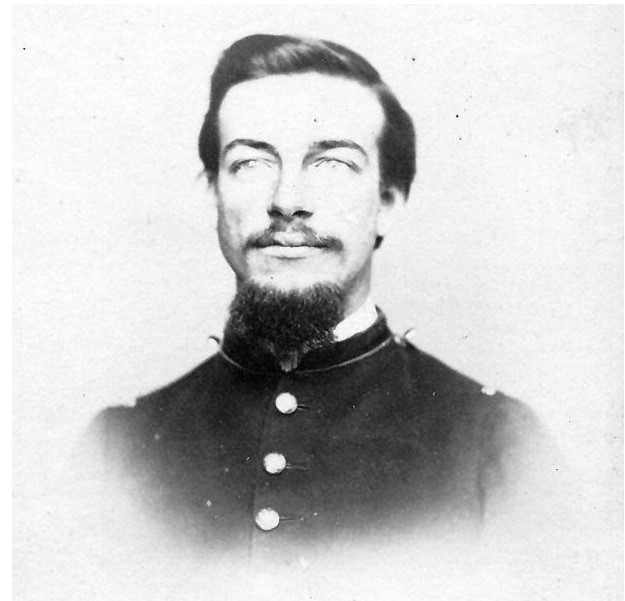|

August 10, 2020
#328
Thank you,
Barbara Schock, for sharing your extraordinary gift of these vignettes of Galesburg &
19th century American history.

Robert H. Avery (1840-1892)
Began designing labor-saving farm equipment while
a prisoner-of-war at the famous Andersonville Prison. |
The
Avery Brothers By Barbara
Schock
George Avery (1802-1886) came to Knox County,
Illinois, in 1837. He was of the seventh generation of the Avery family in
America. He had been born in New Lebanon, Columbia County, New York. He was a
subscriber to the Gale Plan for the Galesburg Colony. On January 24, 1839, he
married Seraphina Princess Mary Phelps (1815-1891). She had come west with her
mother and brother a short time before. They had seven children. The husband and
wife are buried in Hope Cemetery among many others of the pioneer generation.
Robert H. Avery (1840-1892) was the first child born to
the couple. Cyrus M. Avery (1846-1905), the fourth child, would grow up to have
characteristics very complementary to those of his brother. Both sons graduated
from Knox College. The two would build a million dollar company manufacturing
farm implements.
Robert enlisted in Company A, 77th Illinois Volunteer
Infantry during the Civil War. He rose in rank from corporal to sergeant to
headquarters duty. On August 17, 1864, he was captured at Cedar Point, Alabama,
and became a prisoner of war. He was held in the notorius Andersonville prison
by the confederates for five and a half months. He was exchanged April 18, 1865,
and mustered out of service on June 9th, 1865. Shortly after arriving back in
Knox County, he contracted typhoid fever. He recovered from the disease and was
able to continue his work of creating labor-saving machinery for farmers.
During his time in Andersonville, Robert drew diagrams
for machine parts in the sand and carved them of wood scraps. After the war he
was affiliated with the Brown Corn Planter Works and the Frost Manufacturing
Company where he gained experience in metal molding. He also homesteaded in
Sterling, Kansas, which required heavy duty machinery to break the prairie soil.
He received his first patent while living there.
By the 1870s the two brothers had established their own
manufacturing firm producing corn stalk cutters, planters and cultivators. In
1882 the manufacturing plant was moved to Peoria and it became a million dollar
company. The company created branch offices across the upper Midwest offering a
wide variety of farm machinery.
In 1891 the company started offering steam-powered farm
machinery and had a reputation for innovation in the field. Grain thrashers
composed most of their business for the next decade or so. They expanded into
gasoline-powered trucks and automobiles after the turn of the twentieth century.
The company didn’t survive the Great Depression.
Cyrus Avery was the brother who could distinguish between
the essential and non-essential aspects of conducting a manufacturing plant. He
was a perfect partner for his mechanical-minded brother. Through their mother,
the sons were related to Riley Root, another mechanical genius of early
Galesburg days.
Robert Avery died September 13, 1892, and is buried in
Springdale Cemetery, Peoria. Cyrus Avery died September 15, 1905, and is buried
in Hope Cemetery. They lived useful lives.
|
